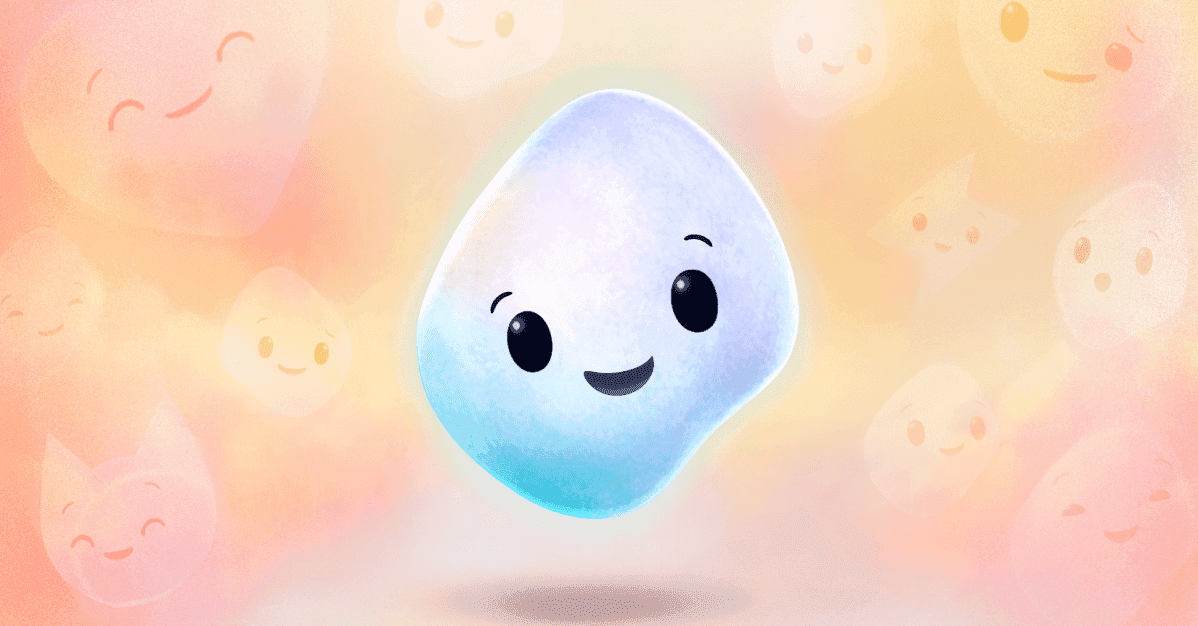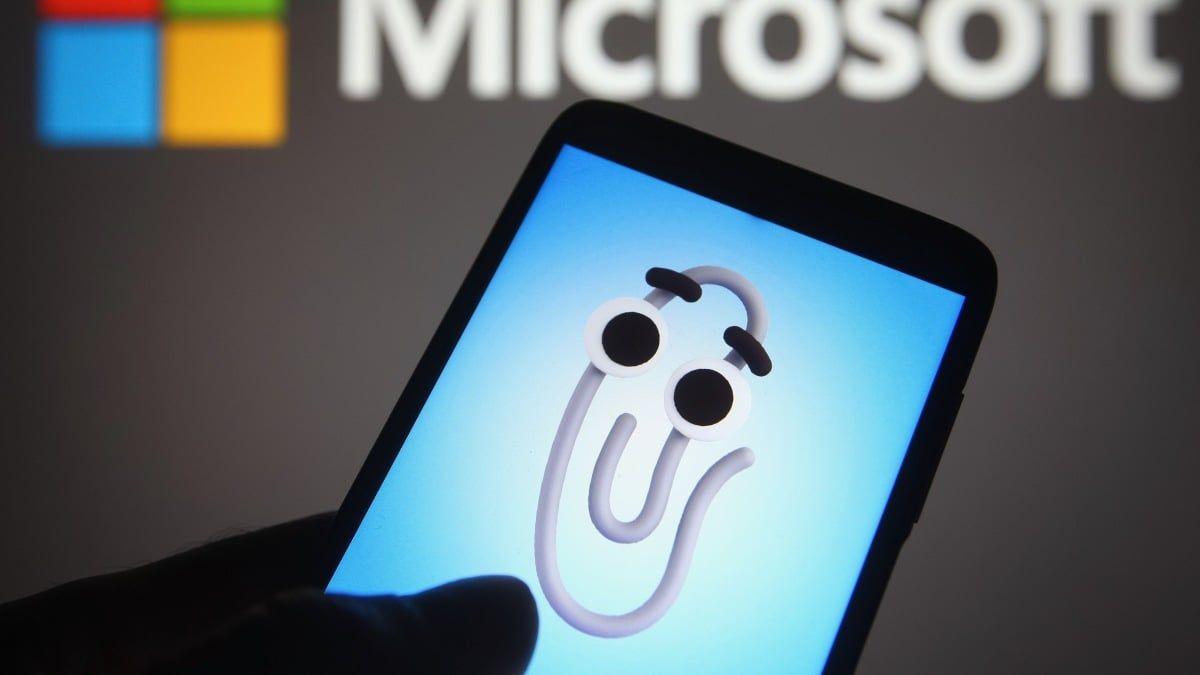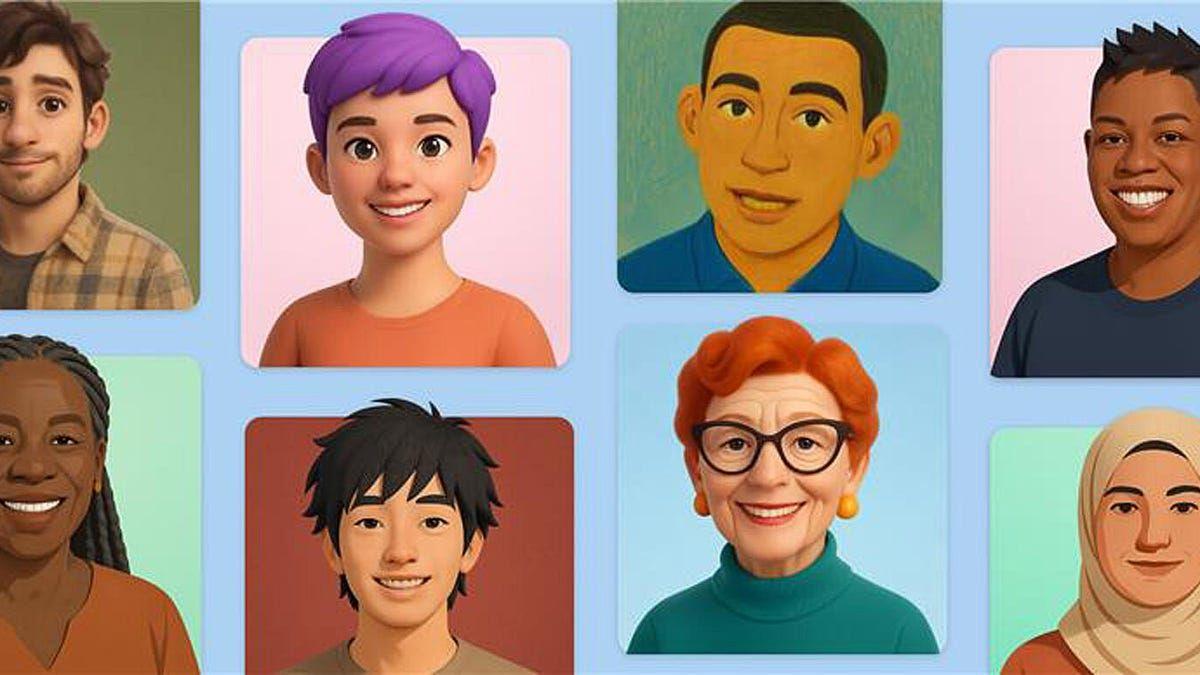Microsoft Unveils Copilot Appearance: A New Face for AI Interaction
5 Sources
5 Sources
[1]
Microsoft's AI CEO thinks Copilot will age and 'have a room that it lives in'
Tom Warren is a senior editor and author of Notepad, who has been covering all things Microsoft, PC, and tech for over 20 years. Mustafa Suleyman, Microsoft's AI CEO, has a vision of Copilot that involves it being so highly personalized that "it will age." Microsoft has been increasingly pushing Copilot to be a personalized AI assistant, with a big redesign last year that included a conversational voice mode. Now, Suleyman's Microsoft AI team is launching a new Copilot virtual character that will interact in real-time with you. "Copilot will certainly have a kind of permanent identity, a presence, and it will have a room that it lives in, and it will age," says Suleyman on an episode of The Colin & Samir Show this week. "I'm really interested in this idea of digital patina. The things I love in my world are the things that are a little bit worn or rubbed down, and have scuff marks. Unfortunately in the digital world we don't have a sense of age." Part of this idea of a permanent identity for Copilot is a new Appearance feature that Microsoft has started previewing this week. "Copilot Appearance is an experiment that gives you a new, visual way to chat with Copilot, powered by real-time expressions, voice, and conversational memory," says Microsoft. Suleyman gave us an early glimpse at Copilot Appearance during Microsoft's 50th anniversary event a few months ago. It's essentially a virtual character for Copilot, to respond to queries you have -- a little like how Cortana used to animate. Copilot Appearance will smile, nod, and even act surprised depending on the conversation. Early access for Copilot Appearance is live now in Microsoft's Copilot Labs, but it will only work for a subset of users in the US, UK, and Canada. Copilot Appearance is the next step in Microsoft's mission to personalize its AI assistant. Suleyman, who helped co-found Google DeepMind, joined Microsoft more than a year ago to lead a new team that handles the company's consumer-facing AI products, like Copilot, Bing, and Edge. Suleyman has quickly turned Copilot into something that closely resembles Pi, the personalized AI chatbot he was working on at Inflection AI. Most of the Inflection AI team joined Microsoft, and Copilot was overhauled months later with its voice and vision redesign. Suleyman also hinted that the Windows desktop might be where Microsoft turns its AI attention next. "I hate my desktop," said Suleyman on the podcast episode. "I look at my screen and I'm like 'shit man I have a billboard in front of me.' It's just so noisy, so neon, and it's all competing for my attention. It just looks ugly." While Microsoft AI is improving voice and video, Suleyman says he wants a "quieter, simpler, optimized working environment" and that he's thinking about improving his "workshop" in the future. That might be a hint at potential changes to the Copilot app on Windows in the future, or even bigger changes with Microsoft's Copilot Plus PCs. Suleyman said he has customized his phone UI so much to avoid distractions that it's basically a black and white theme designed to hide things. "I use a little rose tint so everything else is noised out, most of the apps are moved to the left and right, and my home screen is really just two or three primary apps," he said.
[2]
Microsoft gives Copilot a face - here's how to try your new Appearance chat buddy
Microsoft has a new experiment, called Copilot Appearance, that's designed to bring its AI assistant to life -- visually, anyway. Also: Microsoft's Copilot Vision can now see and analyze your entire Windows desktop Available now as an early preview in Copilot Labs, this feature layers real‑time facial expressions and non‑verbal cues onto Copilot's voice interactions. The goal is to make conversations with Microsoft's AI feel more natural, human‑like, and animated. Copilot Appearance is a web-based experiment for Microsoft Copilot that animates the AI assistant with real‑time expressions -- it smiles, nods, and is generally expressive while speaking to you. Think of it as giving Copilot its own little face and presence. Mustafa Suleyman, Microsoft's AI CEO, describes Copilot Appearance as a digital buddy that ages alongside you. On an episode of The Colin & Samir Show, he explained how Copilot will have its own "room" to live in and may develop a bit of "digital patina" over time. "I'm really interested in this idea of digital patina. The things I love in my world are the things that are a little bit worn or rubbed down, and have scuff marks," he said. "Unfortunately, in the digital world, we don't have a sense of age." Also: Microsoft's big AI update for Windows 11 is here - what's new For now, Copilot Appearance can smile, nod, and even raise an eyebrow, all while using the same voice you've come to know. It's strictly a web‑only experiment, as Microsoft hasn't announced any plans for Windows or mobile integration just yet. Copilot Appearance isn't widely available in M365 Copilot plans yet. Right now, it is available only to a subset of consumers (no enterprise or business accounts) in the US, UK, and Canada who have been invited into the test flight via Copilot Labs. Copilot Labs is Microsoft's experimental program, similar to Google Labs. It allows a select group of Copilot subscribers to test early generative AI features and tools before they're released broadly or to the public. Access to Labs isn't guaranteed -- you'll need a Copilot Pro plan (at $20 per month) just to be eligible for beta previews like Copilot Appearance. Also: How to remove Copilot from your Microsoft 365 plan - before you have to pay for it Once you're in the test group, you'll see a Copilot Appearance option on the web version of Copilot. If you don't see the Appearance toggle, you're not in the test cohort yet, so just keep an eye on Copilot Labs for updates. If you want to stop using Copilot Appearance, just revisit Voice settings in Copilot's web interface and toggle Appearance off at any time. You'll revert to the classic, audio‑only Copilot experience. Microsoft is gathering feedback via its Discord community. Look for refinements and potentially a broader rollout based on user response. If you're part of the preview, your bug reports and ideas could directly influence the next version of Copilot Appearance. Also: The Surface Laptop is still one of my favorite Copilot+ PCs (and now it's over $500 off) Get the morning's top stories in your inbox each day with our Tech Today newsletter.
[3]
Microsoft has given Copilot a face, and it really wants you to love him
* AI companies are enhancing models by giving them personas and faces to make interactions more human-like. * Microsoft's Copilot is getting a brand new face, bringing more non-verbal communication to voice interactions. * Microsoft aims to make Copilot a friendlier assistant but some worry about AI being viewed as actual thinking beings. Over the past few months, we've seen AI companies work to make their models more human-like. First, it started with making the text it produced more relatable and people-like. Then, when text-to-speech came along, companies worked on making it so they spoke like a person and answered questions at the same speed as you'd expect from a real conversation. Now, the next step is giving those AIs the final touch: a face to gawk at you with. We've seen a few companies add personas to their AI, and now, Microsoft is no different. The company is giving its assistant a brand new face to talk to you with, and it hopes that you'll love it as if it were one of your own. If you thought Copilot wouldn't be riddled with ads, Microsoft is here to prove you wrong They're on the way. Posts 1 Copilot takes one step closer to becoming a real boy In a post on Copilot Labs, Microsoft explains what this new feature means for AI users. It's called "Copilot Appearance," and the idea is that it allows Copilot to, well, make an appearance. It seems that Copilot's true form is a floating white blob with a face, which makes it look like a friendlier and more sociable ball of flubber. Remember that movie? No? Okay. Here's how Microsoft describes Copilot Appearance: What if you could see Copilot react and speak as you chat? With this experiment, we are bringing more non-verbal communication to Copilot, enhancing voice conversations with real-time visual expression. This early prototype allows you to chat, brainstorm, seek advice, or just mess around with Copilot, in a more engaging and expressive way. Yes, right now, Copilot Appearance is still in the testing phase. As such, if you're on the release branch and you invoke Copilot, you won't see its beady-eyed visage peering back at you. However, if you're signed up for the test branch and Microsoft selects your machine for enrollment, you can enable Copilot Appearance by performing the following: Enter Voice mode by clicking the microphone icon on copilot.microsoft.com. Open the Voice settings menu by clicking the gear icon. Turn on the settings toggle for Copilot Appearance. Ask a question or simply say "hi!" and see Copilot react and speak back with smiles, nods, and other expressions. It seems that Microsoft wants to make Copilot somewhat of a friend and co-worker who can assist you with all of your needs. It's definitely giving me the same vibes as Clippy, a digital assistant given a lovable persona to make it more approachable by users. However, it is a little worrying to see companies make their models more 'being-like '; after all, at the end of the day, these are still digital language models and not actual thinking beings. However, with people using AI for work and play, I suppose it was inevitable that companies would push to make their AI assistants your new 'best friend.' In the meantime, some companies are making a stand against this new wave of AI.
[4]
Is Copilot's new emoji-like avatar the new AI Clippy? Microsoft tests Copilot Appearance feature.
Credit: Pavlo Gonchar/SOPA Images/LightRocket via Getty Images As an elder millennial, I remember Clippy well. I don't remember Microsoft Office's animated paperclip fondly, but I'll never forget him. The rarely helpful assistant would pop up to make suggestions as you worked in Microsoft Word, often slowing down the experience significantly. (At least, that's how I remember Clippy.) Now, Microsoft is testing another virtual assistant. While it's not quite Clippy 2.0, the new Copilot Appearance experiment from Copilot Labs is definitely giving major Clippy vibes. Per Microsoft, "Copilot Appearance is an experiment that gives you a new, visual way to chat with Copilot, powered by real-time expressions, voice, and conversational memory." Copilot, Microsoft's ChatGPT-powered AI assistant, is available with many Windows laptops and products. Now, Appearance lets you give Copilot a face -- a marshmallow, emoji-like face. Copilot users who participate in the test can talk to the rainbow-hued face and watch it respond in real-time. While AI chatbots have become hugely popular since the explosive debut of ChatGPT, the chatbot experience is largely text and voice-based. You can find AI avatars, such as xAI's new anime avatars, that react to your prompts, this technology has so far lagged behind traditional chatbots. Copilot Appearance could be a big step toward bringing this technology to the masses. However, as anyone who has seen the movie Her knows all too well, anthropomorphizing AI chatbots comes with some risks. But by making its Copilot Appearance avatar undeniably adorable, Microsoft may help mainstream the anthropomorphization trend, for better or worse. Crucially, the Copilot's experimental new face doesn't have a name, though that might not stop people from settling on a nickname. Clippy's official name was actually Clippit, but no one remembers Clippit. For now, Copilot Appearance is only available to certain users in the United States, the UK, and Canada. It's part of the Copilot Labs program. According to Microsoft, it's easy to access Copilot Appearance: If you don't find a toggle for Copilot Appearance, then you don't have access to this new feature.
[5]
What if Clippy and AI Cloud intelligence had a baby? It would probably look like Microsoft's new Copilot Appearance feature
Copilot Appearance is part of a broader push to give Copilot a persistent identity Microsoft has decided to put a face on its Copilot AI assistant with a new feature called Copilot Appearance. Rolling out to a limited set of users in the U.S., U.K., and Canada as part of Microsoft's Copilot Labs, Appearance is a sort of animated cloud and has a smile instead of just a disembodied voice. Microsoft is hoping Appearance will help make Copilot more enduring as a tool for regular engagement, not just occasional questioning. It's an idea that fits with how the company's consumer AI head, Mustafa Suleyman, envisions the future of Copilot. As he explained in a recent interview, Suleyman sees a more human-like Copilot, one that carries what he calls "digital patina" as it ages, accruing history and personality based on time spent with a user. The Appearance feature is an aspect of that idea. It gives Copilot facial expressions and subtle animations to respond in real time as you talk or type. So you might see a smile when it provides information, or a nod of encouragement when you provide follow-up details. Perhaps even a furrowed brow if you ask for something difficult. The obvious comparison for any Microsoft AI personality attempt is Clippy, but this is, theoretically at least, a far cry from the old paperclip with eyeballs. Unlike Clippy, this assistant doesn't pop in uninvited or ask if you're writing a letter. It will only talk to you when you start a conversation, and it's supposed to exist quietly in the background. But it will remember what you're doing, and that memory lasts. It's the continuity of the memory that makes it possible for Copilot to become as personal as Suleyman wants. Combined with other recent Copilot upgrades like voice mode and vision capabilities, Suleyman hopes Copilot will understand both what you want in the moment and who you are overall. Of course, for now, the visual character isn't doing anything wild. It won't animate a full scene or wave its arms around like a Pixar sidekick. It's more like a friendly desk plant that also edits your reports. Microsoft is moving slowly here for a reason. Other platforms that heavily leaned into character-based chatbots have encountered issues with users becoming overly attached to an AI companion. The risk, of course, is that some people will start thinking of it that way. The goal is to earn a user's trust, but not so much that people forget this is still a tool. But if Microsoft keeps going down this path, it will need to draw some clear lines. Appearance is a layer of presence and polish. It's also a preview of an AI that shows how it is reacting to us with facial expressions and body language, something anyone can understand. But, I still don't want to see Copilot raise its eyebrows and roll its eyes sarcastically at requests it thinks are dumb.
Share
Share
Copy Link
Microsoft introduces Copilot Appearance, giving its AI assistant a visual avatar with real-time expressions, aiming to make AI interactions more engaging and human-like.
Microsoft Introduces Copilot Appearance
Microsoft has unveiled a new feature for its AI assistant Copilot, called Copilot Appearance, which gives the AI a visual avatar capable of real-time expressions. This development marks a significant step in Microsoft's efforts to make AI interactions more engaging and human-like
1
.The Vision Behind Copilot Appearance
Mustafa Suleyman, Microsoft's AI CEO, has shared his vision for Copilot, emphasizing the importance of personalization and permanence. He envisions Copilot as having "a kind of permanent identity, a presence, and it will have a room that it lives in, and it will age"
1
. This concept of "digital patina" aims to bring a sense of familiarity and aging to the digital world, mirroring the way physical objects accumulate character over time.Features and Functionality

Source: The Verge
Copilot Appearance introduces a visual element to AI interactions, allowing the assistant to smile, nod, and express surprise based on the conversation context
2
. The feature is designed to enhance voice conversations with non-verbal communication, making the interaction feel more natural and engaging. Users can activate Copilot Appearance through the Voice settings in the web version of Copilot3
.Limited Availability and Testing
Currently, Copilot Appearance is available as an early preview in Microsoft's Copilot Labs. Access is limited to a subset of consumers in the US, UK, and Canada who have been invited to participate in the test flight
2
. This controlled rollout allows Microsoft to gather feedback and refine the feature before a potential broader release.Implications for AI Interaction
The introduction of Copilot Appearance reflects a broader trend in the AI industry towards creating more personalized and relatable AI assistants. By giving Copilot a face and expressions, Microsoft aims to make the AI feel more like a friendly assistant or co-worker
4
. However, this approach also raises questions about the potential risks of anthropomorphizing AI and blurring the lines between human and machine interactions.Related Stories
Comparisons to Past AI Assistants

Source: Mashable
Some observers have drawn parallels between Copilot Appearance and Microsoft's earlier AI assistant, Clippy
5
. While there are similarities in the attempt to create a more approachable interface for digital assistance, Copilot Appearance represents a more sophisticated and less intrusive approach, designed to enhance rather than interrupt the user experience.Future Developments and Considerations
As Microsoft continues to develop Copilot, there are hints at potential changes to the Windows desktop environment. Suleyman has expressed interest in creating a "quieter, simpler, optimized working environment," which could indicate future updates to the Copilot app on Windows or even broader changes to Microsoft's AI-enhanced PCs
1
.Balancing Engagement and Ethics
While the goal of Copilot Appearance is to make AI interactions more engaging, Microsoft faces the challenge of maintaining a clear distinction between AI tools and sentient beings. As AI assistants become more personalized and human-like, it will be crucial for companies to establish guidelines that prevent users from developing unhealthy attachments or misconceptions about the nature of their AI interactions
4
5
.As Copilot Appearance moves through its testing phase, the tech community will be watching closely to see how users respond to this new form of AI interaction and how Microsoft navigates the complex landscape of AI personalization and ethics.
References
Summarized by
Navi
[3]
[4]
Related Stories
Recent Highlights
1
Google launches Gemini 3 Flash as default AI model, delivering speed with Pro-grade reasoning
Technology

2
OpenAI launches GPT Image 1.5 as AI image generator war with Google intensifies
Technology

3
OpenAI launches ChatGPT app store, opening doors for third-party developers to build AI-powered apps
Technology








